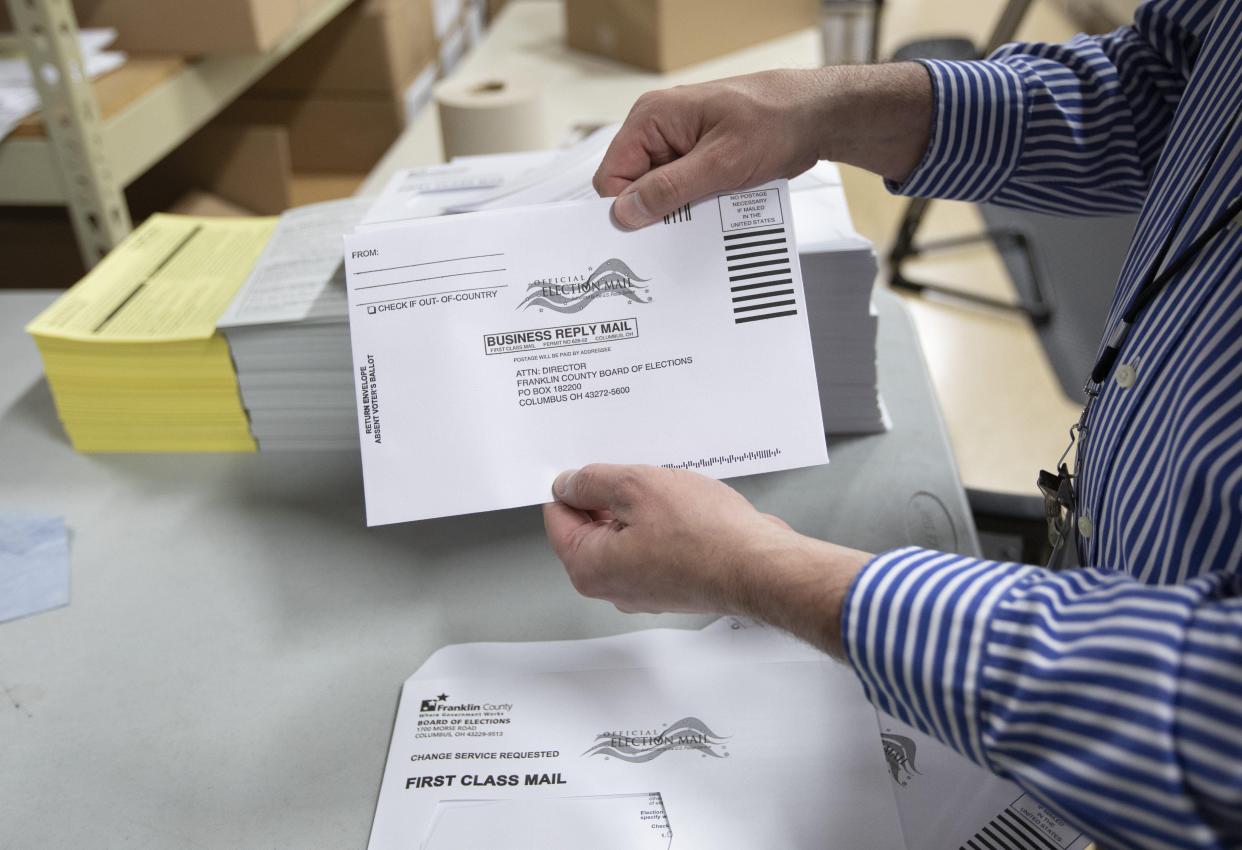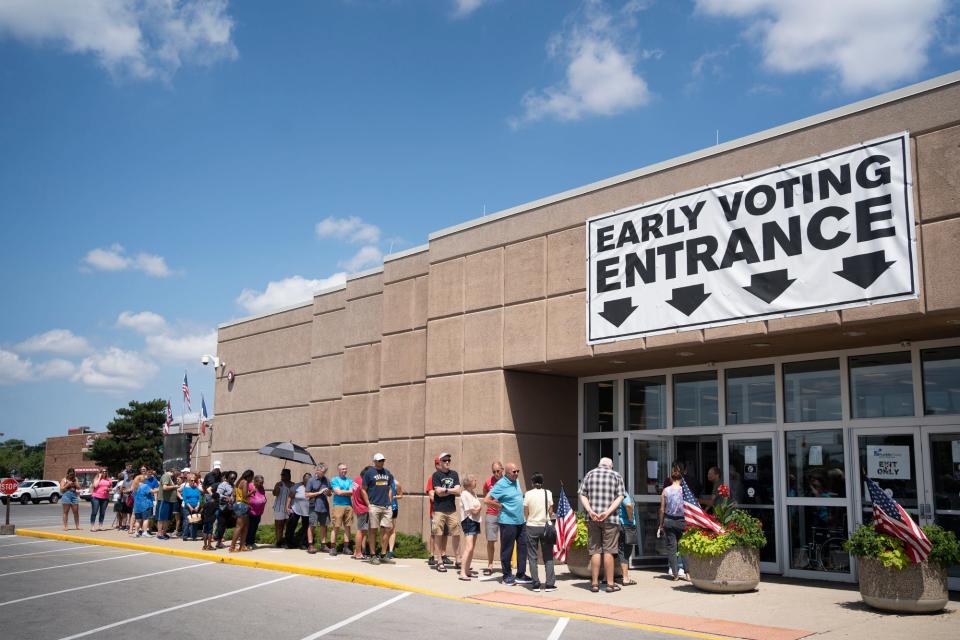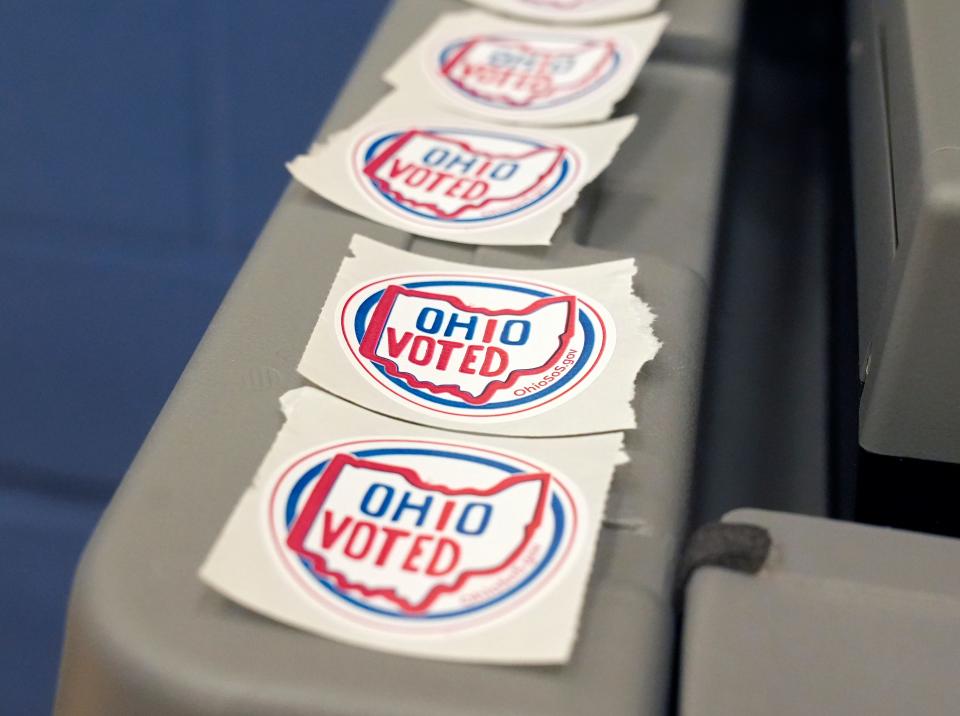New Ohio photo ID law may make it harder for some college students to vote. Find out why.

With the August special election less than two weeks away, one group might have a harder time than others casting their ballot: college students.
While most Ohio colleges and universities don't resume classes until after the Aug. 8 special election, some local voting rights advocates are concerned how the state's new limits on photo IDs and shorter deadlines for mail-in ballots could affect college students casting their votes.
"This election was scheduled when they were out of school and taking place when they might not be back," said Greer Aeschbury, Ohio senior campaign manager for All Voting is Local. "Our democracy is strongest when everyone is able to vote."
HB 458 changes voter ID requirements, absentee ballot timeline
Aeschbury said the new ID requirements in House Bill 458, which was passed during the last General Assembly, specifically hurt college students.
Under the new law, voters can no longer use a utility bill or bank statement with a current Ohio address to prove residency. Only three forms of ID are now acceptable: an unexpired Ohio photo ID such as a driver’s license, a U.S. passport or passport card, or a military ID card.
"It's a slight change from 458 in that you need to have a state ID," said Rob Nichols, a spokesman for the Ohio Secretary of State's office. Nichols said that concept is "supported by an overwhelming majority of Ohioans."
Aeschbury said this generation of college students are less likely to drive than older generations, so they are either more likely to not have driver's licenses or to have lapsed IDs. About a third of Americans have a valid passport. But out-of-state students who want to vote in the communities where they attend school could be the most affected by the new law.
While a person's address on their ID doesn't have to match that on their voter registrations, out-of-state licenses do not qualify as a valid form of photo ID.

Of the nearly 488,000 college students enrolled in Ohio last fall, about 100,000 were nonresidents, according to the Ohio Department of Higher Education.
"This is a huge barrier for 100,000 people to participate in a democratic election," Aeschbury said.
Voting rights advocates have warned that photo ID requirements can burden low-income, unhoused and disabled people trying to vote. Nichols said that Ohio now provides state photo ID cards free of charge to those without a driver's license, but cautions that out-of-state students shouldn't rush to the BMV for one.
That's because federal law prohibits people from having IDs from two different states, Nichols said.
"If they want to hang onto those licenses, you can't have two IDs," he said, "even a state ID in Ohio and a driver's license from, say, Pennsylvania."
Obtaining an Ohio photo ID would nullify their home state's ID, which could cause problems with proving residency and affect scholarships and other financial aid, Aeschbury said.
"It could create collateral consequences," she said.
Mail-in ballots are best for out-of-state college students
It's not impossible, though, for out-of-state students to cast their ballots.
Aeschbury and Nichols said the best way for nonresident college students to vote in state elections is by mail. Absentee ballots only require the last four digits of a voter's Social Security number.
Special election: Want to vote by mail in Ohio's August election? Here's what to know about ballot requests
HB 458 also made significant changes to the absentee ballot process that Aeschbury said voters need to know.
Absentee ballots must now be requested by 5 p.m. seven days before Election Day. If mailed, absentee ballots must be postmarked by the day before the election in order to be counted. You can also return your absentee ballot in person to your county board of elections before the close of the polls at 7:30 p.m. on Election Day.
Regardless of how students make it to the polls this August, Aeschbury said they have a right to be heard.
"Four years is a long time to invest in a state," she said. "But if they feel left out from the political process, I can't believe that they would want to make Ohio their home in the long run."

Sheridan Hendrix is a higher education reporter for The Columbus Dispatch. Sign up for her Mobile Newsroom newsletter here and Extra Credit, her education newsletter, here.
shendrix@dispatch.com
@sheridan120
This article originally appeared on The Columbus Dispatch: College students could face issues in August special election

